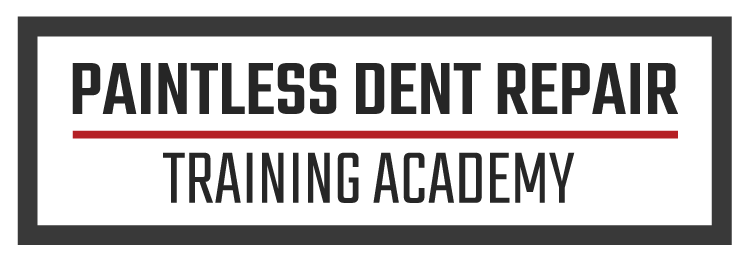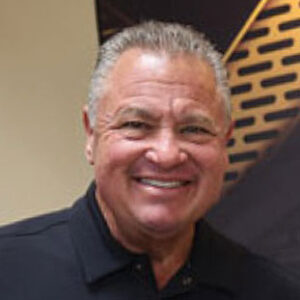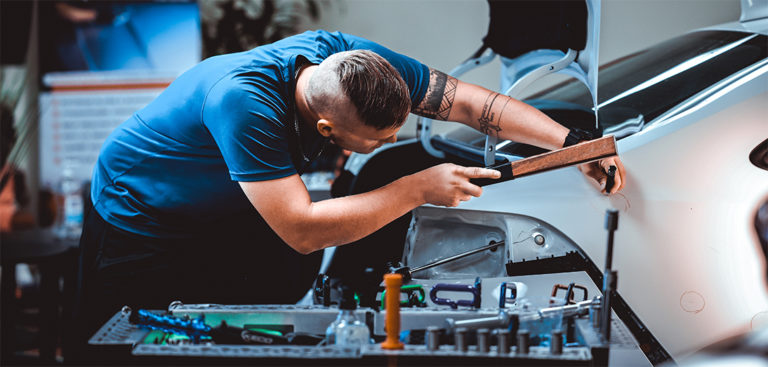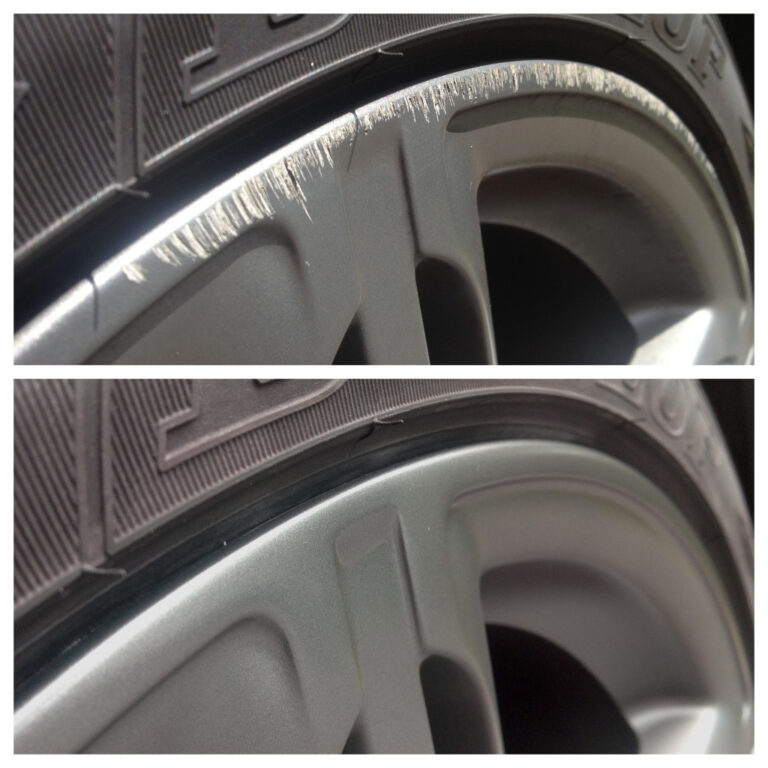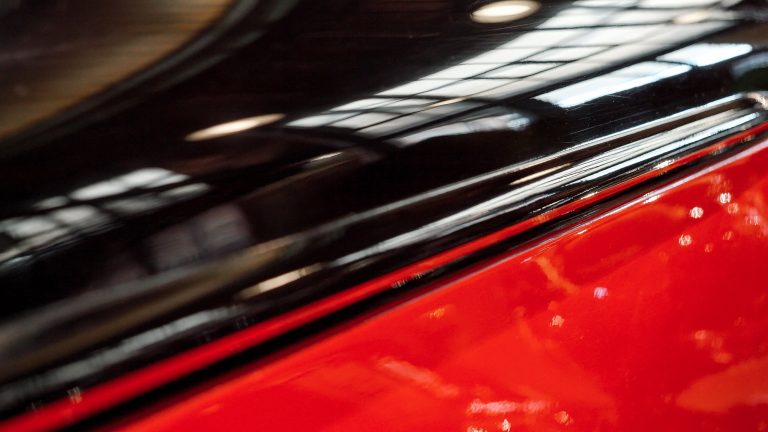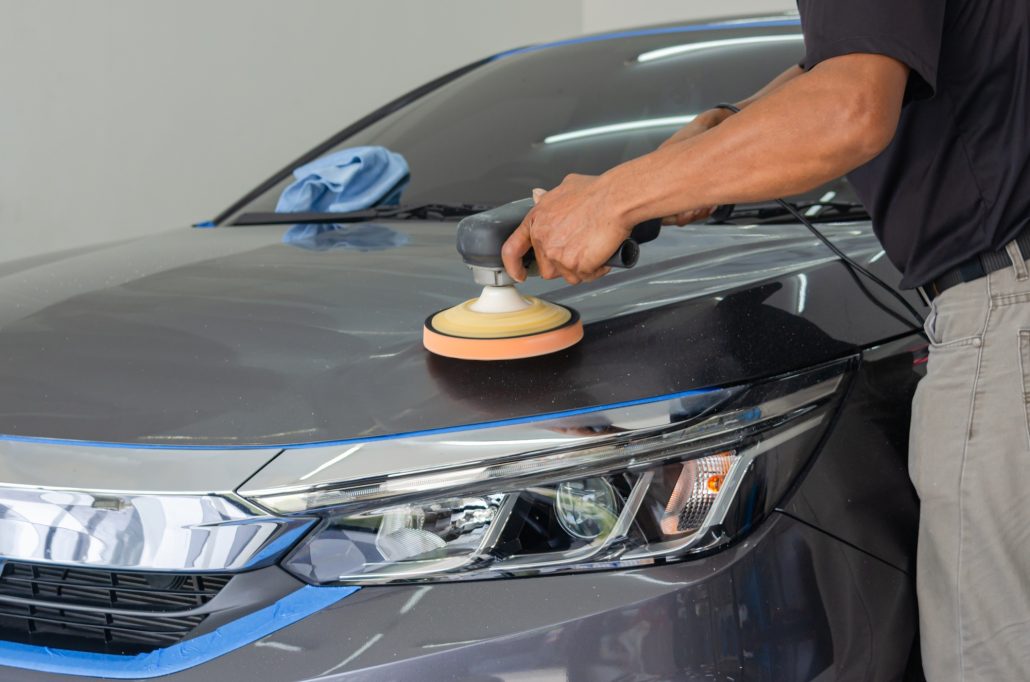The Science Behind Paint Correction: What Every Detailer Should Know
Getting a perfect finish in automotive paint correction is more than just art. It’s science. As a detailer, knowing the technical side is key for top-notch results. Whether you’re new or experienced, learning paint correction can make your work stand out.
To improve your detailing, you must understand how to get a mirror-like finish. Getting training from a place like the Paintless Dent Repair Academy is very helpful. For more info, call us at 1-800-304-3464.
Key Takeaways
- Understanding the science behind paint correction is crucial for detailers.
- Mastering paint correction techniques elevates your work and sets you apart.
- Proper training is essential for achieving professional-grade results.
- The Paintless Dent Repair Academy offers valuable training for detailers.
- Enhancing your skills can lead to higher quality finishes and greater industry recognition.
The Chemistry and Structure of Automotive Paint
Automotive paint is more than looks. It’s a complex system needing deep knowledge for fixing. Understanding modern paint is key in car detailing and restoration.
The Three Layers of Modern Automotive Finishes
Modern car paint has three main layers: primer, basecoat, and clearcoat. The primer makes the surface even and helps other layers stick. The basecoat has the colors, and the clearcoat protects and shines. Knowing these layers helps fix swirl marks and restore paint.
| Layer | Function |
|---|---|
| Primer | Uniform surface and adhesion |
| Basecoat | Color pigments |
| Clearcoat | Protection and gloss |
How Paint Damage Occurs at a Microscopic Level
Damage like swirl marks happens at a tiny scale. It’s caused by dust, bad washing, or pollution. Knowing this helps pick the best fix methods for paint.
The Physics of Paint Correction
To master paint correction, you need to understand the physics. This involves how abrasives work with car paint.
The process is complex. It happens at a tiny level. This is where abrasives in polishing compounds meet the clear coat. Knowing this is key to good machine polishing or buffing.
How Abrasives Interact with Clear Coat
Abrasives remove tiny layers of clear coat. This fixes defects. The size and type of abrasive decide how much it removes.
- Coarser abrasives take off more, for big defects.
- Finer abrasives smooth out, for small flaws.
The Role of Heat and Friction in the Correction Process
Machine polishing creates heat and friction. This can change how the correction works. Too much heat can damage the paint. But the right amount of friction is needed to fix defects.
- Watch the temperature to keep it safe.
- Change buffing pressure and speed based on the paint.
Identifying and Diagnosing Common Paint Defects
As a detailer, you know how frustrating paint defects can be. They ruin the car’s look and value. Finding and fixing these problems is key to making the car look new again.
Swirl Marks and Their Origins
Swirl marks are a big problem for detailers. They happen when cars are washed and dried wrong. They leave behind circular scratches that are hard to get rid of. Knowing why they happen helps fix them better.
Scratches, Water Spots, and Oxidation
Scratches come from accidents or wrong washing tools. Water spots happen when water evaporates and leaves minerals behind. Oxidation makes paint dull and faded from UV rays. Each problem needs a special fix.
Hologramming and Buffer Trails
Hologramming and buffer trails are problems from polishing. Hologramming is patterns left on paint after polishing. Buffer trails are streaks from the machine. Changing how you polish and using the right products can reduce these issues.
Knowing why these defects happen helps you fix them. This makes your car care better and makes customers happy.
Paint Correction Fundamentals: The Science Behind the Shine
To get a perfect finish, you must understand the basics of paint correction. It’s about making damaged paint look new and shiny.
Understanding Cut, Polish, and Refinement Stages
The process has three main steps: cutting, polishing, and refinement. Cutting is when you remove the bad paint with special compounds. Polishing makes the paint smooth, fixing small scratches. Refinement makes it super shiny, like a mirror.
- Cutting: Removing damaged paint layers
- Polishing: Refining the paint surface
- Refinement: Achieving a high-gloss finish
The Importance of Paint Thickness Measurements
Knowing your paint’s thickness is key before you start. You must check it to avoid clear coat burn-through. This mistake can be very expensive. A paint thickness gauge helps you know how much to cut and polish safely.
Reading Paint and Adjusting Your Approach
Every paint is different, so you need to adjust your method. You must look at the paint’s age, type, and damage level. This way, you can get the best results in making your paint look new.
Essential Tools for Professional Paint Correction
To get top-notch paint correction, you need the right tools. The quality and variety of your tools matter a lot. It’s key to choose the best equipment for your work.
Machine Polishers: Rotary vs. Dual Action vs. Forced Rotation
Machine polishers are key for pro paint correction. There are three main types:
- Rotary Polishers: These are strong tools for deep correction. But, they need a lot of skill to use right.
- Dual Action Polishers: These are safer and better for beginners. They’re great for finer polishing steps.
- Forced Rotation Polishers: They mix the best of both worlds. They offer a good balance between correction and safety.
Pad Types and Their Specific Applications
The pad type you use can change the polishing result a lot. Each pad is made for different tasks, like:
- Cutting Pads: These are tough pads for big corrections.
- Polishing Pads: These are softer pads for making the finish smoother.
- Finishing Pads: The softest pads for the last steps to get a shiny finish.
Compounds, Polishes, and Finishing Products
Choosing the right compounds, polishes, and finishing products is important. It depends on how much correction you need and the finish you want. Knowing the differences between these products is key for top results.
With the right machine polishers, pads, and compounds, you can get amazing paint correction. Your work will meet the highest standards of professional detailing.
The Science of Modern Abrasive Technology
Learning about modern abrasive technology is key for paint correction experts. These abrasives work with car paint to fix it without harming it.
Diminishing vs. Non-Diminishing Abrasives
Diminishing abrasives, like old compounds, get weaker as they’re used. Non-diminishing abrasives stay strong, cutting well all the time.
How Compounds Break Down During Use
Compounds wear out from friction and heat in paint correction. This can make them less effective and cause swirl marks if not handled right.
Lubricant Technology and Its Impact on Results
Lubricants are very important in paint correction. They cut down friction and protect the paint. Good lubricants help abrasives work better without harming the paint.
When picking abrasives and lubricants, think about:
- The paint type
- How much correction is needed
- The tools used (like rotary polishers)
Knowing the science of modern abrasives helps detailers choose the right tools. This leads to better paint correction results.
Paint Correction Techniques for Different Paint Types
Detailers need to know the paint type they’re working with. Each paint type needs a special way to fix it. This way, the paint looks better without getting damaged.
Working with Soft Japanese Paints
Soft Japanese paints get swirl marks and scratches easily. To fix these, use gentle compounds and soft polishing pads. A dual-action polisher is best because it corrects without too much heat or friction.
Approaches for Hard German Automotive Finishes
Hard German finishes need strong fixing methods. Rotary polishers with cutting compounds work well for deep scratches. But, watch the paint’s temperature and adjust the pressure to avoid harm.
Special Considerations for Ceramic-Infused and Factory Matte Paints
Ceramic-infused paints need gentle fixing to keep them strong. Factory matte paints need special care to keep their look. Important things to remember are:
- Don’t use products that change the matte look
- Use matte-specific cleaning and correction products
- Do gentle, controlled polishing
Knowing what each paint type needs helps detailers fix them right. This makes the car look great and keeps the paint safe.
The Multi-Stage Paint Correction Process
To get a perfect finish, we use a careful, multi-step process. This method fixes many paint problems, from small issues to big damage.
Assessment and Test Spot Methodology
First, we check the paint’s condition carefully. We look at it under different lights to find all problems. Then, we do a test spot to see the best way to fix it and how the paint will react.
Compounding, Polishing, and Refining Stages
The process has three main steps: compounding, polishing, and refining. Compounding uses strong products to fix big problems. Polishing uses softer abrasives to make the paint smooth. Lastly, refining uses a fine polish to get a shiny finish.
Measuring Your Progress with Proper Lighting
While fixing the paint, we check our work often under the right light. This helps us see how we’re doing, find any left-over problems, and change our method if needed. Good lighting shows even tiny flaws, helping us get the best results.
Common Paint Correction Mistakes and How to Avoid Them
Even skilled detailers can make mistakes in paint correction. Knowing these errors helps you get a perfect finish.
Clear Coat Burn-Through Risks and Prevention
Clear coat burn-through is a big risk. It happens when too much paint is taken off, showing the base coat. Watch the paint thickness and adjust your method to avoid this.
Improper Pad and Product Selection
Choosing the wrong pad or product can ruin your work. For example, a rough pad with a fine polish can scratch the paint. Always pick the right tools for the job.
Technique Errors That Compromise Long-Term Results
Using too much pressure or the wrong machine speed can mess up your work. Getting better takes practice and patience.
| Mistake | Consequence | Prevention |
|---|---|---|
| Clear Coat Burn-Through | Exposure of Base Coat | Monitor Paint Thickness |
| Improper Pad and Product | Suboptimal Results or Damage | Match Tools to the Job |
| Technique Errors | Compromised Results | Practice and Patience |
Advanced Paint Correction for Severe Defects
Advanced paint correction is key for fixing big problems. It helps with deep scratches and other serious damage. Detailers use special methods to make the car look new again.
Wet Sanding Fundamentals and Safety Protocols
Wet sanding is important for fixing big paint issues. It uses sandpaper with water to fix damage without making it worse. Safety first means wearing the right gear and keeping the air clean.
Addressing Deep Scratches and Acid Etching
Dealing with deep scratches and acid etching needs careful steps. Detailers use special products to fix these problems. How you do it matters to avoid making things worse.
When to Recommend Paintless Dent Repair from PDR Academy
For really deep dents, paintless dent repair (PDR) is best. The PDR Academy (1-800-304-3464) helps detailers learn PDR. This way, they can fix more problems.
Protecting Your Paint Correction Investment
Keeping your car’s paint looking new is key. After spending time and money on it, you must protect it. This keeps your car looking great.
Sealants vs. Waxes vs. Ceramic Coatings
You have choices to protect your car’s paint: sealants, waxes, and ceramic coatings. Sealants last longer than waxes. Waxes give a natural look and shine. Ceramic coatings are the best, lasting long and repelling water.
| Product | Durability | Hydrophobic Properties | Gloss Enhancement |
|---|---|---|---|
| Waxes | Short-term (1-3 months) | Moderate | High |
| Sealants | Medium-term (3-6 months) | High | Moderate |
| Ceramic Coatings | Long-term (1-5 years) | Very High | High |
Maintenance Protocols for Corrected Finishes
To keep your car’s paint looking good, wash and dry it often. Use gentle soap and a soft towel. For quick cleanups, try a waterless wash or detail spray.
Client Education for Long-Term Preservation
Teaching your clients how to care for their car is important. Give them a care schedule and suggest the right products. This way, they can enjoy their car’s look for a long time.
Conclusion: Mastering the Art and Science of Paint Correction
Learning paint correction takes time, patience, and a lot of knowledge. As a detailer, you know it’s more than just fixing flaws. It’s about knowing the science and art behind it.
You can give amazing results by understanding paint, abrasives, and how to fix it. No matter the paint type, your skill is key. It’s all about adapting and getting better.
Keep learning and improving in detailing. Stay current with new methods, products, and tools. With hard work, you’ll get really good at paint correction. You’ll be known for your great work in the industry.
